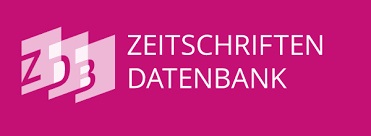Submissions
Submission Preparation Checklist
As part of the submission process, authors are required to check off their submission's compliance with all of the following items, and submissions may be returned to authors that do not adhere to these guidelines.- The submission has not been previously published or submitted for consideration by any other journal (or an explanation has been provided in Comments to the Editor).
- The submission file is in OpenOffice, Microsoft Word, or RTF format.
- Wherever possible, URLs are provided for references.
- The text is 1.5 spaced; 12 point font size; and all illustrations, figures, and tables are placed in the appropriate places in the text, rather than at the end. Make sure to include separately the files for the charts and figures.
- The text adheres to the stylistic and bibliographical requirements outlined in the Directrices del autor/a that appear in the About section.
- The file that will be uploaded with the full text DOES NOT contain information about the authors or their affiliation, to respect double blinding.
- I will declare in the Comments to the editor section the use of AI and the total percentage, as well as indicate what percentage was used in the various activities (References, Writing, Review).
Artículos
Artículo: se refiere a trabajos originales que expongan los principales hallazgos teóricos, empíricos o metodológicos de investigaciones concluidas o en curso que analicen desde distintas disciplinas procesos vinculados a la actividad turística.
Reseñas
Reseña bibliográfica: Es un texto breve que refiere o analiza publicaciones en formato físico o electrónico recientes que aborden temáticas de turismo o de investigación. El Comité editorial será el responsable de sugerir los libros a reseñar.
Nota crítica
Nota crítica: es una reflexión académica sobre temas actuales o avances de investigación.
Copyright Notice
The authors will be solely responsible for the ideas, statements and opinions expressed in their text, so the journal does not assume any responsibility in this regard. The authors retain their moral rights as established by the Copyright Law. Dimensiones Turísticas authorizes the reproduction of its material through magnetic, electronic and reprographic means as long as the contents are not altered, it is non-profit and the full source is cited.
Privacy Statement
The names and email addresses entered in this journal site will be used exclusively for the stated purposes of this journal and will not be made available for any other purpose or to any other party.






